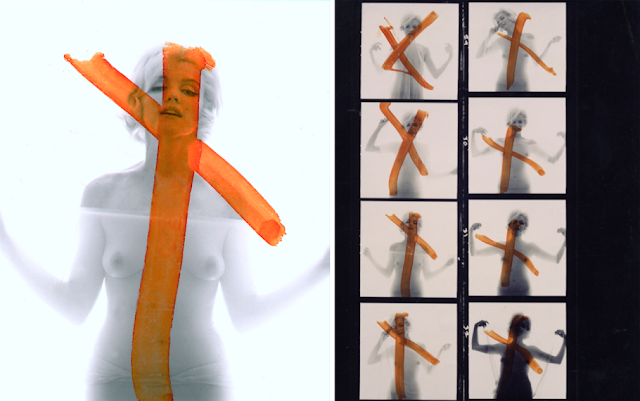Bert Stern Original Madman
“When a portrait evokes a feeling, then you’ve got something. Technique isn’t really important. What I want is a believable moment.” – Bert Stern
Bertram Stern (born 3 October 1929 in Brooklyn) is an American fashion and celebrity portrait photographer.
His best known work is arguably a collection of 2,500 photographs, some nude or semi-nude, taken of Marilyn Monroe over a three day period, six weeks before her death. As they were the last posed photographs taken of Monroe, the portfolio has come to be known as "The Last Sitting". The photographs were taken for Vogue, who published several of them following Monroe's death. A book containing these photographs, including copies of proofs over which Monroe had written comments, or crossed out with lipstick, was published in 1992 with the title Marilyn Monroe: The Complete Last Sitting.
He also directed Jazz on a Summer's Day, a 1959 documentary film set at the 1958 Newport Jazz Festival. In 1999 the film was deemed "culturally significant" by the United States Library of Congress and selected for preservation in the National Film Registry.Stern worked as a photographer on the film Lolita (1962) and was responsible for the publicity photographs of its star Sue Lyon. He has photographed celebrities such as Audrey Hepburn, Elizabeth Taylor, Madonna, Kylie Minogue and Drew Barrymore in addition to his work for advertising and travel publications.
In 1962, Stern had three intimate photo sessions with Marilyn Monroe, on assignment for Vogue, only weeks before the starlet’s unexpected death. The resulting 2,600 photographs, collectively known as “The Last Sitting,” are arguably the photographer’s most recognizable body of work and have inspired innumerable tributes and imitations.
Stern published Marilyn Monroe: The Complete Last Sitting in 1992.
Marilyn Monroe, “The Last Sitting,” 1962.
Before their publication in Vogue, Bert’s images were sent to Marilyn on contact sheets under the condition that she would return them all. When the photos came back, Marilyn had used an orange magic marker and scratches from a hairpin to cross out the pictures that, as Bert describes, “upset her because they didn’t reflect her picture of herself.”
“Making love and making photographs were closely connected in my mind when it came to women,” says Stern. “[Marilyn] said, ‘I want a man with an easy hand, a soft touch,’ so I tried to kiss her and she said no. But I did think if she’d said, ‘Let’s go off to the desert together,’ I’d have jumped in a car and driven away.”
“Women and photography were the two things that I loved most in the world. When I became a Voguephotographer, I got my chance to combine them,” Bert remembers.
“[Marilyn] went off into the bathroom and changed, and came out, lifted up one of the layers so that you could see through it, and she said, ‘How’s this for 36?’”The scar apparent on her stomach is from a gall-bladder surgery that the actress underwent earlier the same year.
.
Liz Taylor, 1962.
“Liz Taylor is tough. I don’t fool around with Liz Taylor. I take my picture and I leave,” Stern recalls.
Sue Lyon, 1961.
Stern and Stanley Kubrick were friends from their early days at Look magazine, where Stern held his first job as a mail boy and Kubrick was a young staff photographer. Kubrick asked Stern to take the publicity photos of Sue Lyon for his film Lolita, which was released in 1962.
Brigitte Bardot, 1960.
Ever taken with the feminine allure, Stern argues, “Women are the goddesses. Man is the slave.”
Salvador Dali for Polaroid, 1958.
Dali instructed Stern, “Hold the book tight,” while he used a grease pencil to make his marks.
Harpo Marx, 1959, and Buster Keaton, 1958, for Smirnoff.
Twiggy 1967
Bert Stern: Original Mad Man (2011) >>>
Stern was awarded the first contract for an advertisement photo for Smirnoff Vodka, a company that had previously relied only on ad illustrations. Stern’s conceptual images were considered a great success and launched his lifelong career in photography.
Twiggy 1967
Louis Armstrong, 1958. In 1958, Stern shot and directed the documentary film Jazz on a Summer’s Day at the Newport Jazz Festival in Rhode Island.
"Bert Stern: Original Mad Man" is the definitive voyage into the life and work of one of America's most influential photographers. Photographing the world's most alluring women in fashion and Hollywood for the past 50 years -- Marilyn Monroe, Elizabeth Taylor and Audrey Hepburn among them -- minted Stern as a celebrity in his own right.




































.jpg)